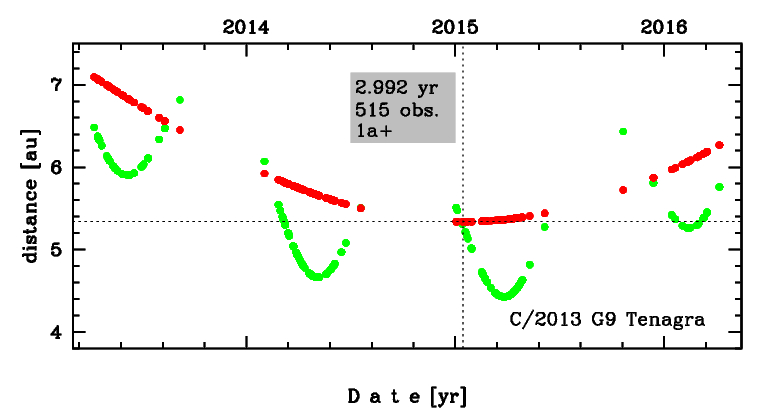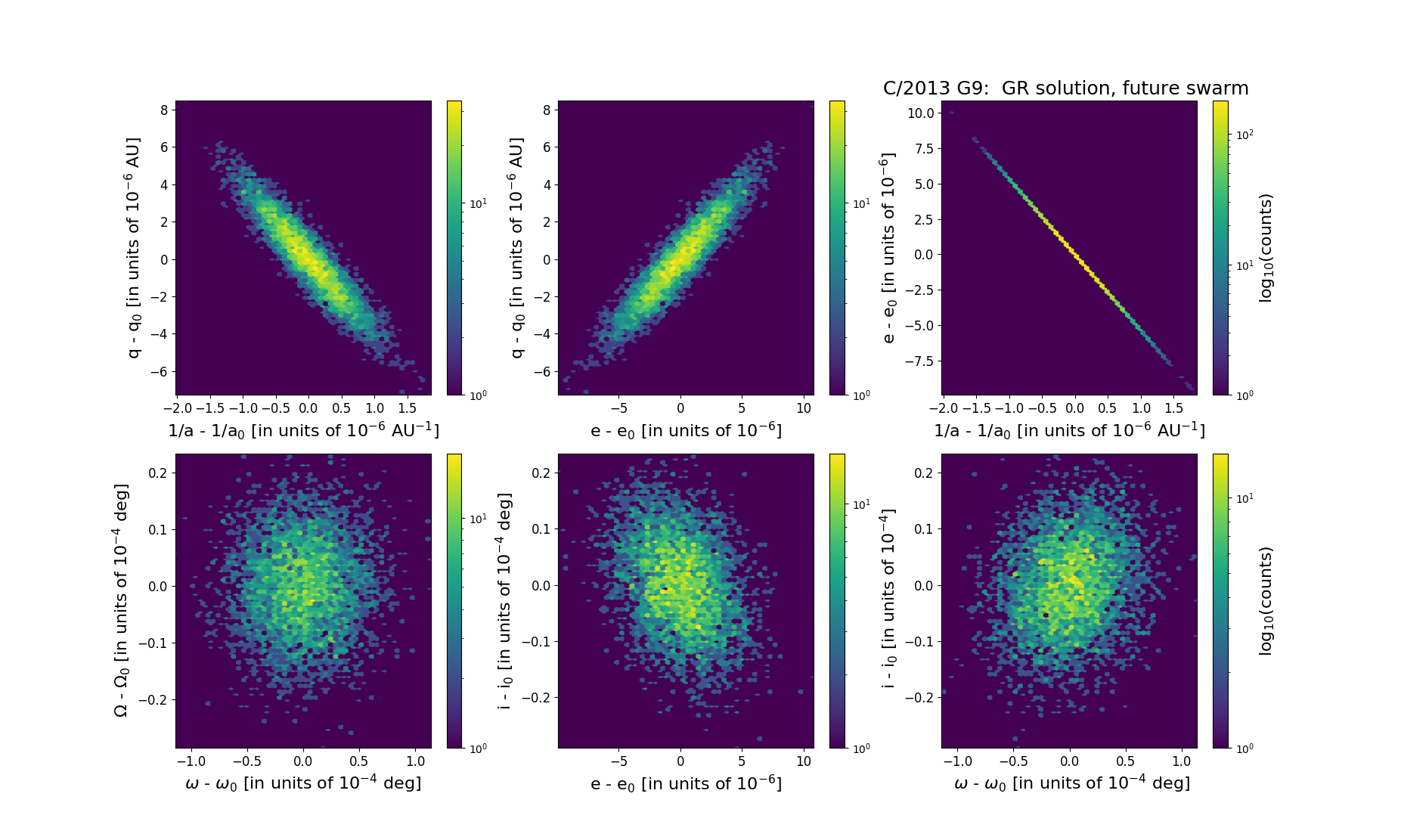C/2013 G9 Tenagra
more info
Comet C/2013 G9 was discovered on 15 April 2013 with Tenagra II telescope (near Nogales, U.S.A.), that is a year and 9 months before its perihelion passage. Soon, it was found on earlier images taken on 9 April 2013 with the VHS-VISTA, Cerro Paranal. This comet was observed during four oppositions until 6 April 2016.
Comet had its closest approach to the Earth on 26 March 2015 (4.424 au), about 2.5 months after perihelion passage.
Solution given here is based on data spanning over 2.99 yr in a range of heliocentric distances: 7.10 au – 5.337 au (perihelion) – 6.27 au.
This Oort spike comet suffers very slight planetary perturbations during its passage through the planetary system and in the next perihelion passage it will be an Oort spike comet.
Comet had its closest approach to the Earth on 26 March 2015 (4.424 au), about 2.5 months after perihelion passage.
Solution given here is based on data spanning over 2.99 yr in a range of heliocentric distances: 7.10 au – 5.337 au (perihelion) – 6.27 au.
This Oort spike comet suffers very slight planetary perturbations during its passage through the planetary system and in the next perihelion passage it will be an Oort spike comet.
| solution description | ||
|---|---|---|
| number of observations | 515 | |
| data interval | 2013 04 09 – 2016 04 06 | |
| data type | perihelion within the observation arc (FULL) | |
| data arc selection | entire data set (STD) | |
| range of heliocentric distances | 7.1 au – 5.34 au (perihelion) – 6.27 au | |
| detectability of NG effects in the comet's motion | NG effects not determinable | |
| type of model of motion | GR - gravitational orbit | |
| data weighting | YES | |
| number of residuals | 1002 | |
| RMS [arcseconds] | 0.36 | |
| orbit quality class | 1a+ | |
| orbital elements (barycentric ecliptic J2000) | ||
|---|---|---|
| Epoch | 2321 10 21 | |
| perihelion date | 2015 01 14.34971368 | ± 0.00030127 |
| perihelion distance [au] | 5.33480693 | ± 0.00000199 |
| eccentricity | 0.99952476 | ± 0.00000256 |
| argument of perihelion [°] | 205.051974 | ± 0.000031 |
| ascending node [°] | 35.816743 | ± 0.000008 |
| inclination [°] | 146.247157 | ± 0.000008 |
| reciprocal semi-major axis [10-6 au-1] | 89.08 | ± 0.48 |
| file containing 5001 VCs swarm |
|---|
| 2013g9a5.bpl |

